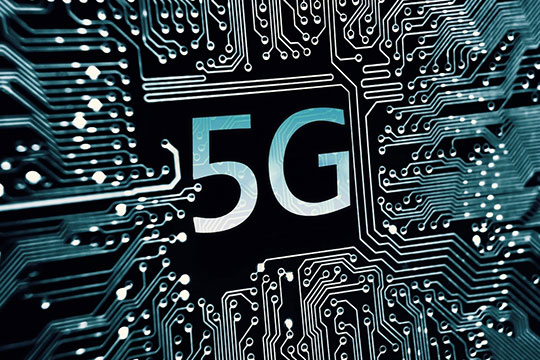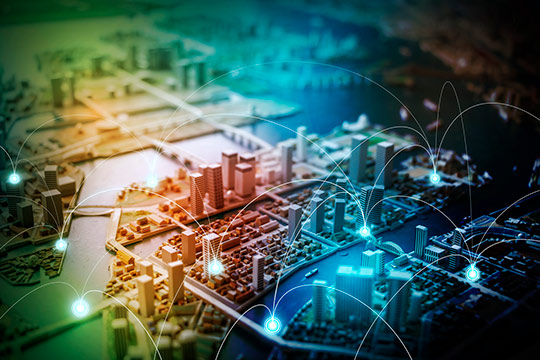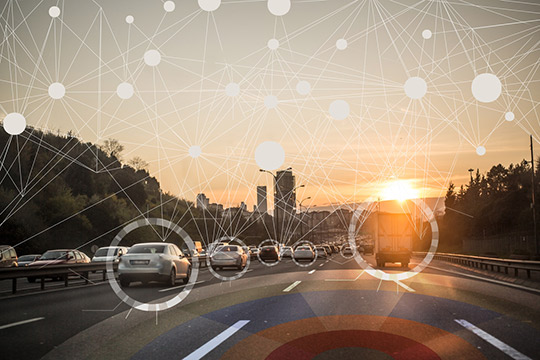TECHNOLOGY FOCUS
By increasing the density and number of different functionalities in wireless networks there is more and more need for the use of artificial intelligence for planning the network deployment, running their optimization and dynamically controlling their operation.
Machine learning algorithms are used for the prediction of traffic and network state in order to timely reserve resources for smooth communication with high reliability and low latency. Big data mining is used to predict customer behaviour and timely pre-distribute (cashing) the information content across the network so that it can be efficiently delivered as soon as requested.
Intelligent agents can search the internet on behalf of the customer in order to find the best options when it comes to buying any product on line


COURSE CONTENT
The course covers a review of AI based learning algorithms with a number of case studies supported by Python and R programs.
It provides a discussion of the learning algorithms used in decision making based on game theory and a number of specific applications in wireless networks such as channel, network state and traffic prediction.
WHO SHOULD ATTEND
Participants with background in either networks planning, design, deployment and control or networks/internet economics should benefit from participation.
All application examples are focused on 5G networks and participants with general background in networks will be able to follow the course.
This includes researchers, students and professors in academia as well as industry, networks operators, regulators and managers in this field.

Day 1
The course will start with a comprehensive survey of AI learning algorithms supported by case studies and programs in Python and R. These algorithms are used in the prediction of the network parameters for efficient network slicing, customer behavior for content cashing across the network or for efficient network control and management.
- AI: Learning Algorithms
- Linear Regression
- Logistic Regression
- Decision Tree: Regression Trees vs Classification Trees
a. Working with Decision Trees in R and Python
b. What is bagging? What is Random Forest?
c. What is Boosting? Which is more powerful: GBM or XGboost?
d. Working with GBM in R and Python
e. Working with XGboost in R and Python - SVM Support Vector Machine , Naive Bayes , kNN , K-Means
- Random Forest
- Dimensionality Reduction Algorithms
- Gradient Boosting algorithms , GBM , XGBoost , LightGBM , CatBoost
- Artificial Neural Networks (ANN)
- Explainable NN
Day 2
The second day we will further narrow down our interest towards the network applications and focus on AI based learning algorithms used for reaching equilibria in games used among different parties in a verity of new business models in communication networks. This include the competition between the network operators, service providers or even users in so called dynamic network architectures of user provided networks.
AI: Learning Equilibria and Games
1. Best Response Dynamics (BRD)
2. Fictitious Paly (FP)
3. Reinforcement Learning (RL)
4. Joint Utility Strategy Learning (JUSTE)
5. Trial and Error Learning (TE)
6. Regret Matching Learning
7. Q-Learning
8. Multi-Arm Bandits
9. Imitation Learning
10. Specific AI Based Algorithms in Networks:
- Artificial intelligence applications in the telecommunications industry
- Network management area
- Expert systems and machine learning
- Machine learning and distributed artificial intelligence
11. Small Cell Networks: AI Controlled Caching
- Estimating the popularity profile
- The training time per user
- Transfer learning
- Parameterized family of popularity profile
- Examples
Day 3
The third day we will cover in details a number of specific applications of AI for dynamic readjusting network behavior based on the observation of its state, traffic variation and user behavior. This includes: Channel and Power Level Selection in Cellular Networks, Network Self-organization, Proactive Cashing, Big Data Learning, Graph Neural network and Multi-Arm Bandit Estimators.
1. Cellular Networks: AI Based Channel and Power Level Selection
- Multi‐Agent ‐Learning
- Exploration /exploitation
- Players’ belief
- Implementation Issues
- Performance Evaluation LTE‐A network
- Autonomous Channel and power level Selection ACS
2. AI Controlled Network Self-organization
- Self‐configuration functions,
- Self‐optimization functions and
- Self‐healing functions.
- SON Coordination
- Value Functions
- Multidimensional Regret
- Examples/macro + pico cells
3. AI for Proactive Cashing
- cache‐enabled CRAN
- Content Distribution Prediction
- Mobility Prediction
- Complexity
- Overhead: between users and the content server
- Simulation Results
4. Big Data Learning: AI Controlled Resource Allocation
- Operation costs
- Batch learning/offline SAGA based training
- Batch gradient ascent iteration
5. Graph Neural network: Prediction of Resource Requirements
- Network Function Virtualization
- Network Slicing
- Graph Neural network
- GNN‐based dynamic resource management
- Neural Network Architectures
6. Multi-Arm Bandit Estimators: Markov Channel
- Problem statement and restless bandit formulation
- Index Policy
- Indexability and Whittle's Index Policy
- discounted reward criterion
- Properties of Belief State Transition
- The Optimal Policy
- The Value Function
- Discounted Time of Being Passive
- Performance of Whittle's Index Policy

